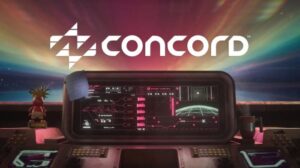The Concord Consortium, a non-profit organization dedicated to improving science education, has been a driving force in transforming how we learn and teach science. Founded in 1994, the consortium has built a reputation for creating innovative and engaging educational resources that leverage technology to make science accessible and exciting for learners of all ages.
Their mission is to empower educators and researchers with cutting-edge tools and resources that foster a deeper understanding of scientific concepts. From interactive simulations to data analysis tools, the Concord Consortium has developed a comprehensive suite of resources that have been adopted by classrooms and research institutions worldwide.
Concord Consortium
The Concord Consortium is a non-profit organization dedicated to improving science, technology, engineering, and mathematics (STEM) education through the use of innovative technology and research. Their mission is to empower educators and learners to explore, understand, and engage with the world around them through inquiry-based learning and data-driven approaches.
Mission and Vision
The Concord Consortium’s mission is to create and disseminate innovative learning technologies and research-based materials that foster inquiry-based learning and empower educators to engage students in meaningful STEM experiences. Their vision is to create a world where all learners are empowered to become scientifically literate citizens who can think critically, solve problems, and contribute to a sustainable future.
History and Founding
The Concord Consortium was founded in 1990 by Dr. Robert Tinker, a physics teacher and researcher at the Concord-Carlisle High School in Massachusetts. Dr. Tinker recognized the potential of technology to transform STEM education and envisioned a platform that would enable students to engage in authentic scientific inquiry.
The organization has since grown into a leading force in educational technology and research, with a global impact on STEM education.
Key Programs and Initiatives
The Concord Consortium has developed numerous programs and initiatives that have transformed STEM education worldwide. Some of their key programs include:
- Interactive Simulations:The Concord Consortium has developed a wide range of interactive simulations that provide students with hands-on experiences in science and mathematics. These simulations allow students to explore complex concepts, test hypotheses, and analyze data in a virtual environment. Examples include the “Modeling Instruction” platform for teaching physics and the “CODAP” (Common Online Data Analysis Platform) for analyzing and visualizing data.
- Data-Driven Inquiry:The Concord Consortium emphasizes the importance of data-driven inquiry in STEM education. They have developed resources and tools that help students collect, analyze, and interpret data from real-world contexts. The “Data Nudge” platform provides students with opportunities to explore real-world data sets and develop their data analysis skills.
- Teacher Professional Development:The Concord Consortium provides extensive professional development opportunities for teachers, helping them integrate technology and inquiry-based learning into their classrooms. These workshops and online resources focus on building teachers’ confidence and skills in using technology and data-driven approaches to teach STEM.
- Research and Evaluation:The Concord Consortium is committed to rigorous research and evaluation to ensure the effectiveness of their programs and resources. They conduct research studies to assess the impact of their materials on student learning and teacher practice. This research informs the development of new resources and helps ensure that the Consortium’s programs are aligned with best practices in STEM education.
Impact on Education and Research
The Concord Consortium has had a profound impact on STEM education and research worldwide. Their programs and resources have been used by millions of students and teachers in over 100 countries. The Consortium’s work has been recognized by numerous awards and accolades, including the prestigious National Science Foundation’s “Director’s Award for Distinguished Public Service.”The Concord Consortium’s impact can be seen in several key areas:
- Increased Access to STEM Learning:The Consortium’s technology-based resources have made STEM learning more accessible to students in diverse settings, including rural areas and underserved communities. Their simulations and data-driven tools provide engaging and interactive learning experiences that can bridge gaps in access to traditional STEM education.
- Improved Student Learning Outcomes:Research has shown that students who use the Concord Consortium’s resources demonstrate significant improvements in their understanding of STEM concepts, their problem-solving skills, and their scientific literacy. The Consortium’s focus on inquiry-based learning and data analysis has been shown to foster deeper understanding and engagement in STEM.
- Enhanced Teacher Practice:The Concord Consortium’s professional development programs have empowered teachers to become more confident and effective in integrating technology and inquiry-based learning into their classrooms. This has led to a more engaging and effective STEM learning experience for students.
- Advancement of STEM Education Research:The Concord Consortium’s commitment to research has contributed to the advancement of STEM education research, providing valuable insights into the effectiveness of technology-based learning and inquiry-based pedagogy. Their research findings have informed the development of new educational resources and have influenced policy decisions related to STEM education.
Concord Consortium’s Educational Resources

The Concord Consortium is a non-profit organization dedicated to improving science, technology, engineering, and mathematics (STEM) education. They develop innovative and engaging digital resources that make STEM learning accessible and effective for students of all ages. These resources are designed to support inquiry-based learning, promote collaboration, and foster critical thinking skills.
Types of Educational Resources
The Concord Consortium offers a diverse range of educational resources, including:
- Interactive simulations:These simulations allow students to explore scientific phenomena and concepts in a virtual environment. They provide a hands-on experience that allows students to manipulate variables, observe outcomes, and draw conclusions.
- Data analysis tools:These tools empower students to analyze real-world data and draw meaningful insights. They encourage students to develop data literacy skills and apply critical thinking to real-world problems.
- Curriculum materials:The Concord Consortium provides a comprehensive collection of curriculum materials that align with national and state standards. These materials offer teachers ready-to-use lesson plans, activities, and assessments.
- Professional development resources:The Concord Consortium offers a variety of professional development opportunities for teachers. These opportunities help teachers integrate technology into their classrooms, develop effective teaching strategies, and stay up-to-date on the latest research and best practices.
Pedagogical Approach
The Concord Consortium’s resources are based on a constructivist pedagogical approach. This approach emphasizes active learning, student-centered instruction, and the importance of hands-on experiences.
“Learning is an active process in which learners construct their own understanding of the world based on their experiences and interactions.”
Jean Piaget
The Concord Consortium’s resources encourage students to:
- Ask questions:Students are encouraged to be curious and ask questions about the world around them.
- Explore and investigate:Students are provided with opportunities to explore scientific phenomena through hands-on activities and simulations.
- Collect and analyze data:Students learn to collect and analyze data using various tools and techniques.
- Draw conclusions and make predictions:Students are challenged to draw conclusions based on their observations and make predictions about future outcomes.
- Communicate their findings:Students are encouraged to share their findings with others and engage in discussions about their results.
Target Audience
The Concord Consortium’s resources are designed for a wide range of audiences, including:
- K-12 students:The Concord Consortium offers a variety of resources that are appropriate for students in kindergarten through high school.
- Teachers:The Concord Consortium provides teachers with resources and professional development opportunities to support their teaching.
- Researchers:The Concord Consortium collaborates with researchers to develop and evaluate innovative educational tools and approaches.
- The general public:The Concord Consortium also makes its resources available to the general public, promoting science literacy and engagement.
Examples of Use
The Concord Consortium’s resources are widely used in classrooms and research settings around the world.
- In classrooms:Teachers use the Concord Consortium’s resources to engage students in hands-on learning, promote inquiry-based instruction, and foster critical thinking skills. For example, teachers might use the “Modeling Instruction” curriculum to guide students through the process of developing scientific models.
- In research settings:Researchers use the Concord Consortium’s resources to investigate the effectiveness of different teaching approaches and to develop new educational tools. For example, researchers might use the “Data Nudge” tool to study how students learn to interpret and analyze data.
The Concord Consortium and Technology

The Concord Consortium has embraced technology as a core element of its educational resources, recognizing its potential to transform learning experiences and make science education more engaging and accessible. Technology plays a crucial role in the development, delivery, and impact of the Consortium’s resources, shaping the way students learn and educators teach.
Technology Platforms
The Concord Consortium utilizes various technology platforms to deliver its educational resources, ensuring wide accessibility and compatibility with different learning environments.
- Interactive Simulations:The Consortium has developed a wide range of interactive simulations that allow students to explore scientific concepts in a hands-on, engaging way. These simulations are often built using the freely available modeling and simulation software, -Model-It*, developed by the Consortium itself.
They are designed to be intuitive and user-friendly, enabling students to manipulate variables, observe outcomes, and draw conclusions based on their interactions.
- Web-Based Platforms:The Consortium’s resources are often delivered through web-based platforms, making them accessible to students and educators around the world. These platforms provide a centralized hub for accessing various resources, including simulations, data sets, instructional materials, and assessment tools. The Consortium also utilizes online platforms like -Google Classroom* and -Canvas* to integrate its resources into existing learning management systems.
- Mobile Apps:The Consortium has developed mobile apps that provide access to its resources on smartphones and tablets. These apps are designed to be portable and convenient, allowing students to engage with science learning anytime and anywhere. For example, the -Sensei* app provides interactive simulations and data analysis tools for students to explore scientific concepts.
Leveraging Technology for Enhanced Learning
The Concord Consortium leverages technology in various ways to enhance learning experiences and create more effective science education.
- Personalized Learning:Technology allows the Consortium to create personalized learning experiences by adapting the content and pace of instruction to individual student needs. For example, the Consortium’s simulations often incorporate adaptive features that adjust the difficulty level based on student performance, providing appropriate challenges and support.
- Data-Driven Instruction:The Consortium’s resources often incorporate data collection and analysis tools, allowing students to gather and interpret real-world data. This approach promotes scientific inquiry and critical thinking skills, enabling students to make informed decisions based on evidence. For example, the -Data Nudge* platform allows students to collect and analyze data from sensors, exploring real-world phenomena like weather patterns or plant growth.
- Collaborative Learning:Technology facilitates collaborative learning by enabling students to work together on projects and share their ideas. The Consortium’s online platforms provide tools for communication, collaboration, and sharing of resources, fostering a sense of community and peer learning. For example, the -InquirySpace* platform allows students to engage in online discussions, share their findings, and collaborate on research projects.
The Future of Technology in the Concord Consortium’s Work
The Concord Consortium continues to explore and innovate with technology to enhance its educational resources and make science education more accessible and engaging.
- Artificial Intelligence (AI):The Consortium is exploring the potential of AI to personalize learning experiences further, provide individualized feedback, and automate tasks like grading. AI-powered systems can analyze student data and provide tailored recommendations, helping students learn at their own pace and address their specific learning needs.
- Virtual Reality (VR) and Augmented Reality (AR):The Consortium is investigating the use of VR and AR technologies to create immersive learning experiences that transport students to different environments and allow them to interact with scientific concepts in a more engaging way. For example, VR simulations could allow students to explore the inside of a human cell or visit a distant planet.
- Open Educational Resources (OER):The Consortium is committed to making its resources freely available to educators and students worldwide. The use of OER allows the Consortium to reach a wider audience and promote equitable access to quality science education. The Consortium is also working to create a more open and collaborative ecosystem for developing and sharing educational resources.
Research and Development at the Concord Consortium
The Concord Consortium is not only a developer of educational resources but also a dedicated research organization. The organization’s research efforts are deeply intertwined with its mission to improve science education. The research conducted by the Concord Consortium is not confined to the ivory tower but is directly applied to improve educational practices and create effective learning tools.
Impact of Research on Educational Practices
The research conducted by the Concord Consortium has a profound impact on educational practices. This impact manifests in various ways:
- Developing evidence-based educational resources: The Concord Consortium’s research findings directly inform the development of its educational resources. This ensures that the resources are grounded in educational research and are effective in promoting student learning. For instance, the research on student understanding of climate change has led to the development of the “Climate Change: Modeling the Future” curriculum, which uses simulations and data analysis to engage students in exploring complex scientific concepts.
- Informing educational policy: The research findings of the Concord Consortium have also been used to inform educational policy. For example, the organization’s research on the effectiveness of inquiry-based science education has been cited in policy documents advocating for the adoption of inquiry-based teaching methods in classrooms.
- Promoting the use of technology in education: The Concord Consortium is a pioneer in the use of technology to enhance science education. The organization’s research on the use of technology in education has led to the development of innovative educational tools, such as simulations, virtual labs, and data analysis software.
These tools are designed to make learning more engaging, interactive, and accessible for students.
Methodology Used in Research Projects
The Concord Consortium employs a variety of research methodologies in its projects. These methodologies are chosen based on the specific research question being addressed.
- Design-based research: This methodology involves the iterative design and development of educational interventions, followed by rigorous evaluation to assess their effectiveness. This approach allows the researchers to continuously refine the interventions based on feedback and data collected from real-world settings.
- Mixed methods research: The Concord Consortium often uses mixed methods research, combining both quantitative and qualitative data collection techniques. This approach provides a more comprehensive understanding of the phenomena being studied. For instance, in a study on the impact of a new simulation on student learning, researchers might use both quantitative measures of student performance on assessments and qualitative data from student interviews to gain a deeper understanding of the students’ learning experiences.
- Large-scale studies: The Concord Consortium has conducted large-scale studies involving thousands of students and teachers. These studies provide valuable insights into the effectiveness of educational interventions and the factors that contribute to student learning. For example, the organization conducted a large-scale study on the impact of its “Climate Change: Modeling the Future” curriculum, which involved over 10,000 students in 20 states.
The results of this study showed that students who used the curriculum had significant gains in their understanding of climate change and their ability to apply scientific reasoning to real-world problems.
Partnerships and Collaborations
The Concord Consortium is committed to collaboration and has forged partnerships with various organizations to advance its research agenda. These partnerships allow the organization to leverage diverse expertise and resources to address critical issues in science education.
- Universities: The Concord Consortium collaborates with universities to conduct research on a wide range of topics, including student learning, teacher professional development, and the design and evaluation of educational technologies. These collaborations often involve faculty and students from universities, who bring their research expertise to the Concord Consortium’s projects.
- Government agencies: The Concord Consortium partners with government agencies, such as the National Science Foundation (NSF) and the U.S. Department of Education, to conduct research and develop educational resources. These partnerships provide the organization with funding and support to conduct large-scale studies and disseminate research findings to a wider audience.
- Nonprofit organizations: The Concord Consortium collaborates with nonprofit organizations, such as the National Academies of Sciences, Engineering, and Medicine, to advance the field of science education. These collaborations allow the organization to share its expertise and resources with other organizations working to improve science education.
The Concord Consortium’s Impact on Science Education
The Concord Consortium has had a profound and lasting impact on science education, significantly transforming the way students learn and teachers teach science. This non-profit organization has been instrumental in developing innovative, technology-driven learning resources that have revolutionized the field, making science education more engaging, interactive, and accessible for all.
The Concord Consortium’s Approach to Science Education
The Concord Consortium’s approach to science education is rooted in the belief that learning should be active, inquiry-driven, and technology-enhanced. This approach is reflected in their development of various resources, including:
- Interactive simulations:These simulations allow students to explore scientific phenomena and concepts in a virtual environment, fostering deeper understanding and engagement.
- Data analysis tools:These tools empower students to analyze real-world data, develop critical thinking skills, and make informed conclusions.
- Online learning platforms:These platforms provide a comprehensive and flexible learning environment, offering a variety of resources, activities, and assessments.
The Concord Consortium’s approach to science education emphasizes the importance of:
- Inquiry-based learning:Students are encouraged to ask questions, design experiments, and draw conclusions based on their observations.
- Collaborative learning:Students work together to solve problems, share ideas, and learn from each other.
- Technology integration:Technology is used to enhance learning, provide access to real-world data, and create engaging learning experiences.
Examples of the Concord Consortium’s Impact
The Concord Consortium’s impact on science education is evident in the widespread adoption of their resources and the positive outcomes reported by educators and researchers. Some notable examples include:
- The “Modeling Instruction” program:This program, developed by the Concord Consortium, uses interactive simulations and data analysis tools to teach students about scientific modeling. Studies have shown that students who participate in “Modeling Instruction” programs demonstrate significant improvements in their understanding of science concepts and their ability to apply scientific reasoning.
- The “Data Nudge” project:This project, funded by the National Science Foundation, aims to improve data literacy among students by providing them with access to real-world data and tools for analyzing it. The project has been successful in engaging students in data analysis and helping them develop critical thinking skills.
- The “Climate Change Education” initiative:The Concord Consortium has developed a variety of resources for teaching about climate change, including simulations, data sets, and lesson plans. These resources have been widely used by educators to help students understand the science of climate change and its impacts on society.
Perspectives on the Concord Consortium’s Impact
Educators and researchers have consistently praised the Concord Consortium’s contributions to science education.
“The Concord Consortium’s resources have been invaluable in helping me engage my students in science learning. The simulations and data analysis tools make science come alive for them, and they are truly excited to learn.”
A high school science teacher
“The Concord Consortium’s research on learning has had a profound impact on the field of science education. Their work has helped us understand how students learn science and how to design more effective learning experiences.”
A science education researcher
Concord: Places and Concepts

Concord is a common place name in the United States, with several cities and towns sharing this name. These places, while geographically distinct, often share historical and cultural connections, making them fascinating subjects for exploration. This section will delve into the history, significance, and related resources of four prominent Conords: Concord, NC; Concord, NH; Concord, CA; and Concord, MA.
Concord: Places and Concepts
The name “Concord” is derived from the Latin word “concordia,” meaning “harmony” or “agreement.” This name reflects the historical and cultural significance of these places, often associated with moments of unity, agreement, and significant historical events.
| Place | Description | Significance | Related Resources |
|---|---|---|---|
| Concord, NC | Located in Cabarrus County, North Carolina, Concord is a city known for its rich history, vibrant culture, and thriving economy. Founded in 1794, it was a significant center for the textile industry in the 19th and 20th centuries. Today, Concord is a diverse city with a strong automotive industry and a thriving arts and culture scene. | Concord, NC, holds historical significance for its role in the textile industry and its contributions to the state’s economic development. It also boasts a rich cultural heritage, with notable attractions like the Concord Museum and the Cabarrus County Historical Society. |
|
| Concord, NH | The capital of New Hampshire, Concord is a city located in the Merrimack River Valley. It is known for its historic architecture, charming downtown area, and its role as the state’s political center. Concord played a significant role in the American Revolution, with events like the Battle of Concord taking place nearby. | Concord, NH, is a significant historical landmark, known for its role in the American Revolution and its enduring legacy as the state’s capital. It is home to important historical sites like the State House, the New Hampshire Historical Society, and the Concord Museum. |
|
| Concord, CA | Located in Contra Costa County, California, Concord is a suburban city known for its diverse population, its proximity to San Francisco, and its growing technology sector. It is also home to several parks and recreational areas, including the popular Concord Pavilions. | Concord, CA, is a thriving suburban city with a strong economy and a diverse population. It plays a significant role in the Bay Area’s economic landscape and is a popular destination for residents seeking a balance of urban and suburban living. |
|
| Concord, MA | Located in Middlesex County, Massachusetts, Concord is a historic town known for its role in the American Revolution, its literary heritage, and its charming New England character. It was the site of the Battle of Concord, a pivotal event in the early stages of the revolution. Concord is also home to the famous authors Henry David Thoreau and Ralph Waldo Emerson. | Concord, MA, is a significant historical landmark, renowned for its role in the American Revolution and its literary heritage. It is home to important historical sites like the North Bridge, the Minute Man National Historical Park, and the homes of Thoreau and Emerson. |
|
The Battle of Lexington and Concord
The Battle of Lexington and Concord, fought on April 19, 1775, marked the beginning of the American Revolutionary War. It was a pivotal event that ignited the flames of rebellion against British rule and set the stage for the birth of a new nation.
Events Leading Up to the Battle
The tensions between Great Britain and the American colonies had been escalating for years, fueled by a growing sense of discontent with British policies. The colonists resented the taxes imposed on them without their consent, as well as the restrictions placed on their trade and expansion.
The British government, on the other hand, viewed the colonies as a source of revenue and sought to maintain control over them. The British Parliament passed the Intolerable Acts in 1774 in response to the Boston Tea Party, a protest against British taxation.
These acts further angered the colonists and led to the formation of the Continental Congress, a body that represented the interests of all thirteen colonies.In the spring of 1775, British General Thomas Gage, the military governor of Massachusetts, learned that the colonists were stockpiling weapons and ammunition in Concord.
He decided to send a force of British soldiers to seize these supplies and arrest the leaders of the rebellion.
Key Figures
Several key figures played crucial roles in the events leading up to and during the Battle of Lexington and Concord:
- General Thomas Gage: The British military governor of Massachusetts who ordered the seizure of colonial weapons and the arrest of rebel leaders.
- John Hancockand Samuel Adams: Two prominent leaders of the American Revolution who were targeted for arrest by the British.
- Paul Revereand William Dawes: Two riders who alerted the colonists of the British advance.
- Captain John Parker: The leader of the Lexington militia who confronted the British soldiers.
- Major John Pitcairn: The British officer who led the first attack at Lexington.
Timeline of Events
- April 18, 1775: General Gage sends 700 British soldiers under Lieutenant Colonel Francis Smith to Concord to seize colonial military supplies.
- April 18, 1775: Paul Revere and William Dawes leave Boston on horseback to warn the colonists of the approaching British forces.
- April 19, 1775: Revere reaches Lexington, where he warns the local militia.
- April 19, 1775: The British soldiers arrive at Lexington Green and encounter the militia. The first shots of the American Revolution are fired, resulting in eight colonial deaths.
- April 19, 1775: The British soldiers continue their march to Concord, where they encounter fierce resistance from the colonial militia.
- April 19, 1775: The British soldiers retreat back to Boston, pursued by the colonial militia. The British suffer heavy casualties.
Impact of the Battle
The Battle of Lexington and Concord had a profound impact on the course of the American Revolution. It galvanized the colonists and demonstrated their willingness to fight for their independence. The battle also showed the British that they faced a formidable enemy, and it led to a surge in support for the American cause.The battle also helped to unite the colonies.
Before Lexington and Concord, there was a great deal of division among the colonies, but the shared experience of fighting against the British helped to forge a sense of unity.The Battle of Lexington and Concord marked the beginning of a long and bloody conflict that would ultimately lead to the independence of the United States.
It was a turning point in American history, a moment that forever changed the relationship between the colonies and Great Britain.
Concord Grapes and Concord Grape Products
The Concord grape, a beloved fruit native to the United States, has a rich history and a significant impact on the American food and beverage industry. Its distinctive flavor and versatility have made it a staple in kitchens and pantries across the country.
Origin and History of the Concord Grape, Concord consortium
The Concord grape’s journey began in 1849 when Ephraim Wales Bull, a Massachusetts farmer, cultivated the variety from a seed of a wild grapevine. He named it after the town of Concord, Massachusetts, where his farm was located. The Concord grape quickly gained popularity due to its hardiness, reliable yields, and distinctive flavor.
Its popularity spread throughout the Northeast, and by the late 19th century, it had become a significant agricultural commodity.
Characteristics and Uses of the Concord Grape
Concord grapes are known for their dark purple skin, juicy flesh, and slightly tart flavor. They are rich in antioxidants and vitamins, making them a nutritious addition to the diet. Concord grapes are commonly used in various ways, including:
- Fresh Consumption:Concord grapes can be enjoyed fresh as a snack or added to salads and fruit platters.
- Juice:Concord grape juice is a popular beverage, often consumed as a refreshing drink or used as an ingredient in cocktails and other recipes.
- Jelly:Concord grape jelly is a staple in many American pantries. Its sweet and tart flavor complements a wide range of dishes, from toast to sandwiches to meat dishes.
- Wine:Concord grapes are used to produce a variety of wines, including sweet, semi-sweet, and dry styles. The wines are often characterized by their fruity, aromatic flavors and rich color.
- Other Products:Concord grapes are also used to make jams, pies, pastries, and other food products.
Popular Concord Grape Products
The Concord grape’s versatility has led to the development of a wide range of popular products. Some of the most notable examples include:
- Welch’s Grape Juice:One of the most iconic Concord grape products, Welch’s Grape Juice has been a household name for generations. Its distinctive purple color and sweet flavor have made it a favorite among children and adults alike.
- Concord Grape Jelly:This sweet and tart spread is a staple in many American pantries. It is often enjoyed on toast, sandwiches, and crackers.
- Niagara Wine:This sweet wine, made from Concord grapes, is popular for its fruity flavor and affordability. It is often enjoyed chilled as an aperitif or dessert wine.
- Concord Grape Pies:These delicious pies are a classic American dessert. The filling is made with Concord grapes, sugar, and spices, creating a sweet and tart treat.
Economic Impact of the Concord Grape Industry
The Concord grape industry has a significant economic impact on the United States. The production and processing of Concord grapes generate revenue for farmers, processors, and retailers. The industry also provides employment opportunities in various sectors, including agriculture, food processing, and transportation.
The Concord grape industry contributes to the overall economic well-being of communities across the country.
Summary
The Concord Consortium’s impact on science education is undeniable. Their commitment to innovation, research, and collaboration has made a significant difference in the way we approach science learning. As technology continues to evolve, the consortium remains at the forefront of educational advancements, ensuring that future generations have access to the tools and resources they need to thrive in a world increasingly shaped by science and technology.






